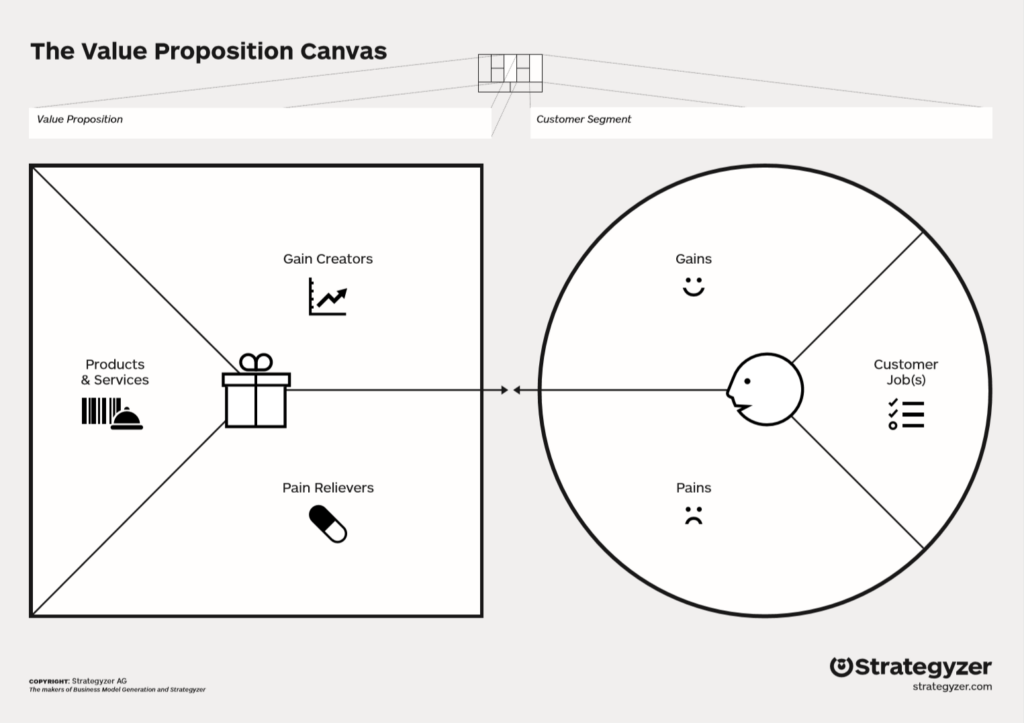Week 2 Update
- Week 1 Recap
- Sprint 1 Kickoff
- Market and Customer
- Problem Solution Fit
- Additional Resources
Week 1 Recap
Last week, we covered a lot of ground in our 3-day entrepreneurial bootcamp. We will be adding video and presentation links to individual session descriptions on our website in the next few days. In the meantime, you can access the full collection of presentations and templates from the Tufts Venture Accelerator 2023 Landing Page.
For some of you, the jargon could be overwhelming. We have also prepared an Entrepreneurship Jargon Translator to help you decipher this strange new language. Enjoy!
Sprint 1 Kickoff
Sprint 1: Foundations
This week marks the start of TVA2023’s first “Sprint.” A “Sprint” is a short period of time during which a team completes a predetermined body of work. We are borrowing this concept from the Agile Software Development Process – read more about Scrum Sprints on the Atlassian blog.
In this sprint you will review every aspect of your business, culminating in the creation of the following deliverables:
- A first-pass implementation of your basic marketing presence
- A first-pass implementation of your due diligence package
Teams have asked whether they should create the due diligence package even if they are early stage or a non-profit. Our answer is: “Yes, absolutely”. The discipline of creating these artifacts will help you up-level your business fundamentals and, more importantly, identify areas in your business that needs work. That, and preparing an updated 5-minute pitch for your enterprise by the midpoint, is very much worth the investment.
Complete your Lean Canvas or Business Model Canvas
In our bootcamp, we went over common innovation and startup frameworks. Depending on the type of venture and your progress, you may find one more helpful than another.
- If you are just starting out, you may find the Lean Canvas (LC) the most helpful.
- If you have been in business for a while, the Business Model Canvas (BMC) would be the most helpful.
- If you are working on a social enterprise, especially if it is a non-profit, then the Mission Model Canvas (MMC) might be the most helpful.
You can find links to these canvass and additional templates on the program landing page. We strongly recommend every team to complete the canvas most helpful to you at the beginning of this week. This will serve as your venture’s baseline.
Introducing the Scrum
Starting this week, you will be doing Weekly “CEO” scrums. This is an accountability ritual borrowed from the 15-minute Daily Scrum or Standup based on the Scrum methodology, which came out of the Agile Software Development Process. Each team takes turns sharing the following in 3 minutes or less.
- What we did last week
- What we will do this week
- Where we will need help
The weekly cadence is just right for a 10 week program. Sharing it with peers keeps you accountable and helps you find ways to help each other.
Connecting with mentors
By this time, the Full-Time Cohort has been connected with your dedicated mentors. Do check out the mentor guidelines (linked from the Landing Page), which includes a link to the official Tufts University Conflict of Interest policy. This ensures the educational nature of your interactions while you are taking part in a DEC-sponsored program and activity.
Market and Customer
Segmentation and Beachhead Market Selection
This week, you should review your market segmentation and target market selection. Some of you may have jumped into a target market without considering alternatives. If this sounds like you, consider using MIT Professor Bill Aulet’s Segmentation Worksheet to help you create your first segmentation matrix. Once you are happy with how you segment your market, take a moment to review the selection criteria for your beachhead market, taking into account all the new data you have collected since you started your business. See if you have any new data that may change how you choose your target market.
Having finished your market segmentation and selection process, your next task is to estimate the size of your opportunity. Hubspot has a great article that explains the TAM, SAM, SOM alphabet soup. Browse the Market Sizing and Analysis section of our knowledgebase for pointers on how to do this quickly and without spending any money on buying analyst reports.
Primary Market Research
None of this can be done without talking to humans. But who do you need to talk to? Here is a list of common stakeholders you will need to identify.
- Economic Buyer: The person who will make the “buy” decision (not the person who does the transaction, but the person who approves it – so it is almost never the purchasing department).
- End User(s): The people who will use your solution (there are sometimes multiple types of end users, and the end users are sometimes not the same as the economic buyers)
- Champion: The person(s) who strongly advocates for your solution to be adopted by the Economic Buyer and/or the End Users
- Influencers: The people, media outlets and more, who the Economic Buyer and/or End User pay attention to when making an adoption or buying decision
- Veto Powers: The people who can make the whole deal go away. For instance, the Chief Financial Officer could stop the VP Engineering from buying new computers to make the engineers more productive by refusing to release the budget.
Start by interviewing potential end users and / or paying customers. Shoot for having at least 50 more people interviewed by the midpoint of this program.
Problem-Solution Fit
Product Positioning Statement
The fundamental premise of your business lies in the idea that you are solving the right problem with the right solution. Problem-solution fit needs to be checked well before Product-Market Fit.
One magic tool that can help us problem-solution fit is the Product Positioning Statement, or the “Moore’s Positioning Statement”. Its beauty lies in its simplicity. We challenge you to create a statement in this format:
- For [target customer]
- Who wants/needs [a compelling reason to buy]
- The [solution name] is a [solution category]
- That provides [these key benefits].
- Unlike [the main competitor],
- The [product name] [provides these key differentiation points].
Value Proposition Canvas
Another really good tool is the Value Proposition Canvas. Strategyzer, a design thinking consulting company, has a great video that explains how it all works. Start with the Customer Profile on the right hand side and clarify the Customer’s “Jobs To Be Done“. Highlight the pains they experience and gains they crave. Then you can create products and services that relieve these pains, and create their desired gains.

Competitive advantage
One interesting topic to discuss is how we think about the competition.
- In for-profit ventures, competitive advantage means you need to find a way to create a solution that is different and better than the alternative. You are playing what seems like a zero sums game. Success means you have out-competed your competition and put them out of business.
- In social enterprises, the calculus changes. Once you map the competition, the best thing to do may not be to outcompete them and become the only game in town – but to find ways to create partnerships, so that together, you can solve a bigger problem in a more complete manner for your beneficiaries.
Testing your minimum viable product (MVP) with humans
Once you have some rapid prototypes you are ready to test with humans. Giff Constable, author of the excellent book “Talking to humans” on customer research and development, has a follow-on book called “Testing with humans” that provides an excellent guideline to the discipline of lean experimentation. The book covers the following topics.
- Why run experiments?
- When to test the business versus the product?
- What makes a good experiment?
- How do you turn experiments into decisions and actions?
- How can we bring experiments into our business culture?
Bruno Pesec has a really excellent article that provides a step by step guide to designing and running lean experiments. Read the article here.
Additional Resources
Readings
Here are additional resources that might help you get started:
- Self-Guided Learning Center, Module 2: This module ties everything together from segmentation through market research to personas.
- Knowledgebase section on Primary Market Research: This section of our searchable knowledgebase contains a lot of information on how to do PMR effectively.
- Self-Guided Learning Center, Module 3: Read ahead on tools to help you refine the definition of your Minimum Viable Product (MVP) and think about how to make sure you have a competitive advantage.
- Knowledgebase section on Product Management: This section of our searchable knowledgebase provides answers to how you might define your product.
Ecosystem events
- For Tufts alumni in the greater Boston area: Join Tufts Entrepreneurial Network (TEN) on June 22, 2023 in Somerville for their annual Boston Summer Kickoff! This is a terrific opportunity to meet alumni in the area over drinks and appetizers. See you there!

